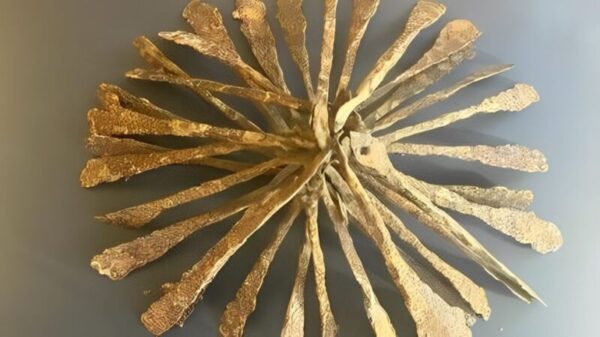
A rare stash of 1,000-year-old ironwork, which sat for 40 years in a family’s basement in Norway, is now seeing the light of day after a woman discovered the hoard during some spring cleaning.
The hoard consists of 32 iron ingots that look like small spatulas and date back to the Viking Age (A.D. 793 to 1066) or high Middle Ages (1066 to 1350). The rods are identical and weigh about 1.8 ounces (50 grams) each, prompting archeologists to think they may have been used as a form of currency and that someone probably buried them with the intention of coming back for the treasure later.
“We call it a cache find because it is clear that someone has [buried it] to hide it,” Kjetil Loftsgarden, an archeologist and associate professor at the University of Oslo and the Museum of Cultural History in Oslo, told NRK News. Each ingot is pierced with a hole on one end, which suggests the ingots could have been tied together in a bunch, experts added.
“Writer Fuel” is a series of cool real-world stories that might inspire your little writer heart. Check out our Writer Fuel page on the LimFic blog for more inspiration.

